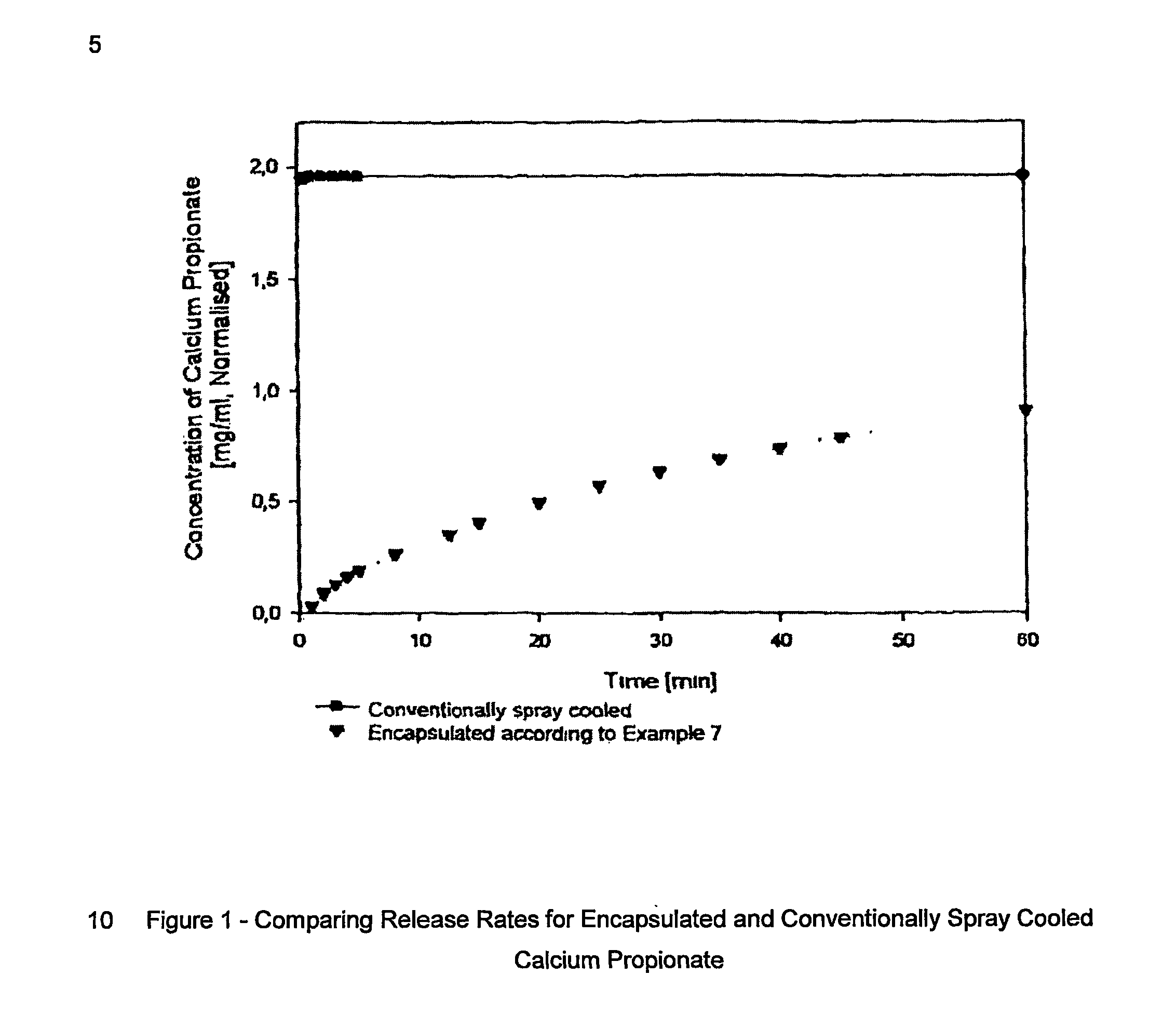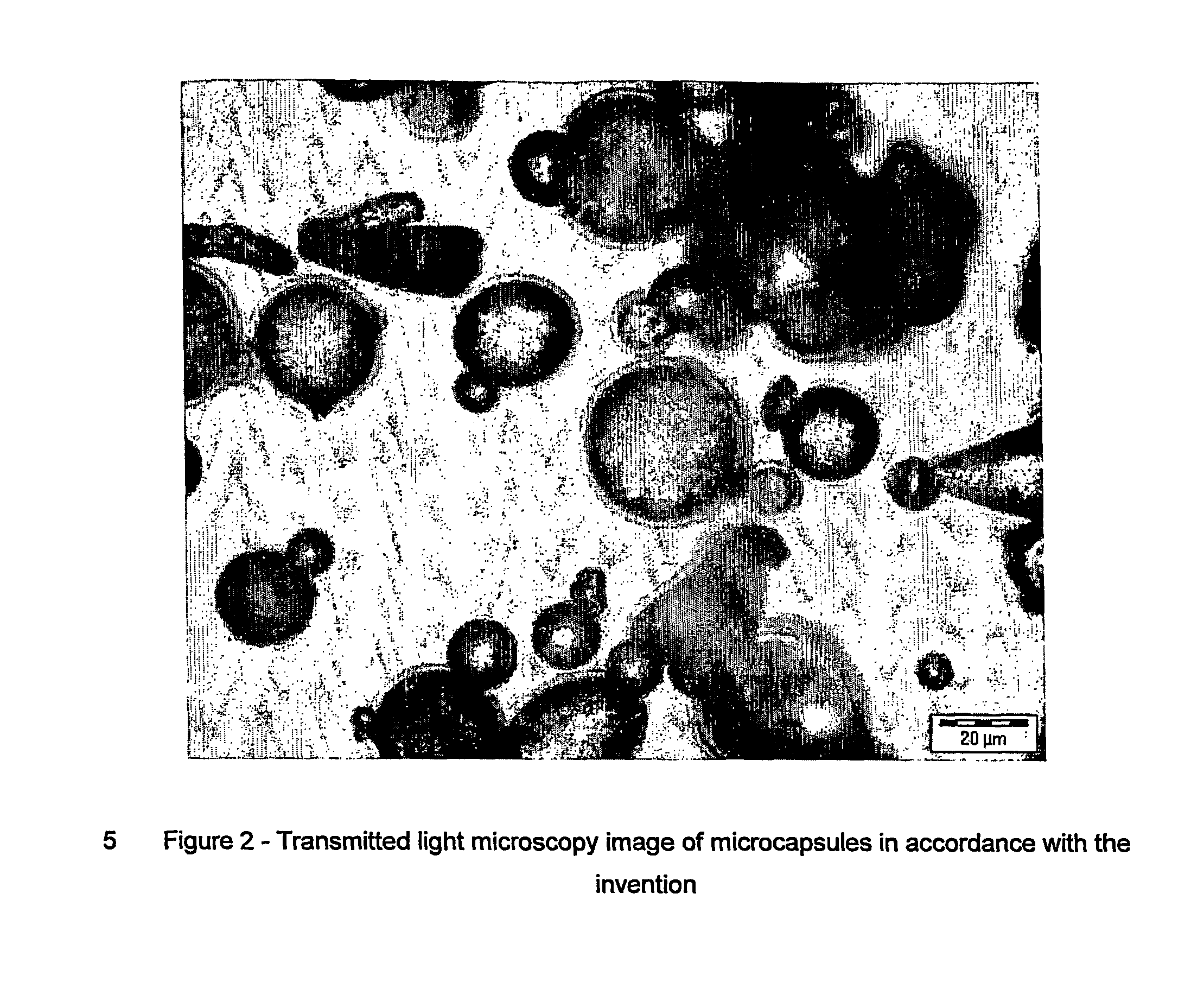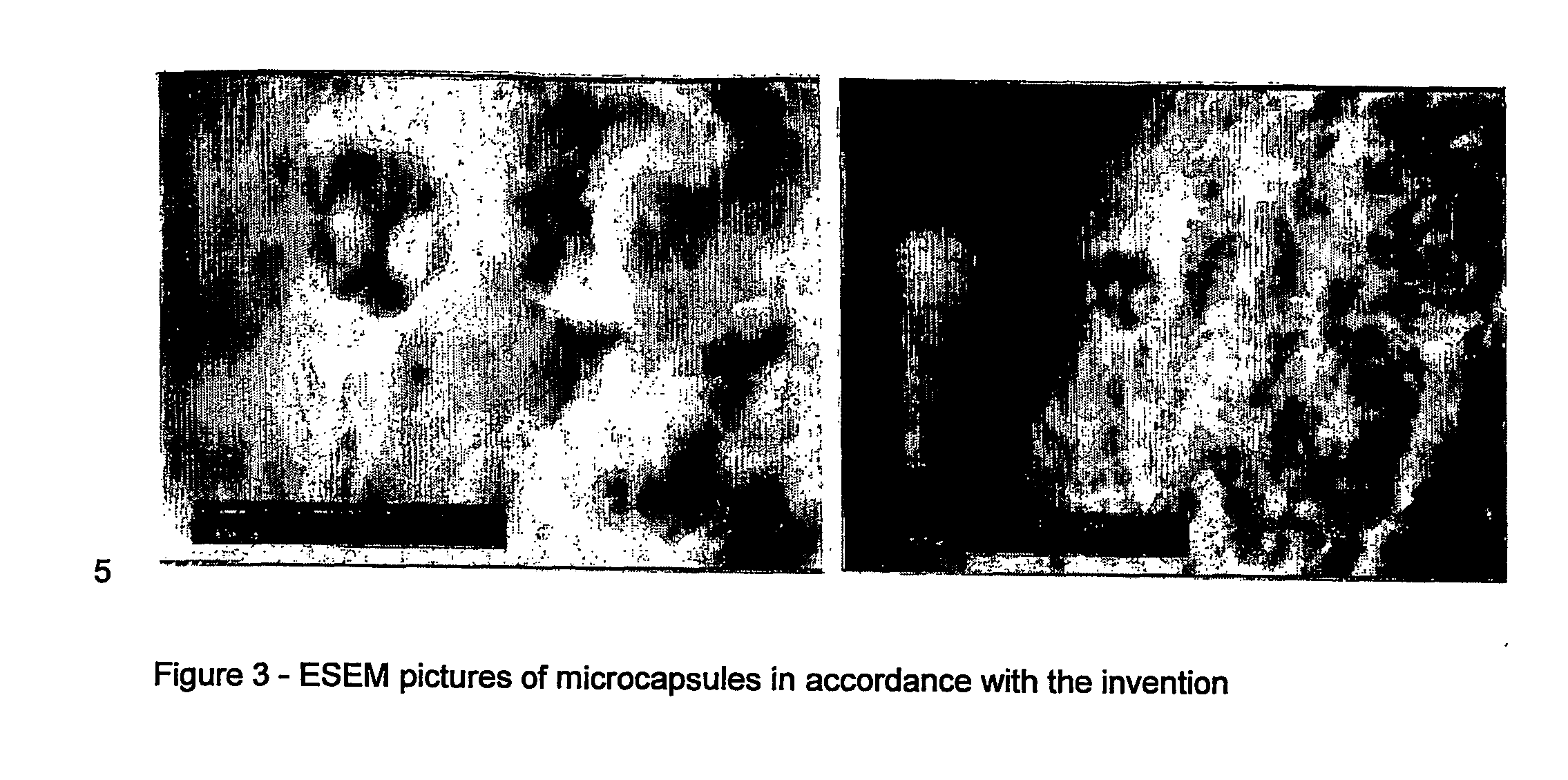Microcapsules
a technology of microcapsules and microcapsules, which is applied in the field of microcapsules, can solve the problems of inability to withstand water on the wall of a container, inability to release active ingredients, and inability to maintain stability of microcapsules, so as to improve the stability of microcapsules, the release rate of active ingredients is usually very high, and the effect of reducing the rate and/or sustained release of active ingredients
- Summary
- Abstract
- Description
- Claims
- Application Information
AI Technical Summary
Benefits of technology
Problems solved by technology
Method used
Image
Examples
example 1
Encapsulation of Pizza Flavour
[0168] First, a solution of 1.5 g κ-carrageenan in 110 ml of water is prepared at 85° C. To this is added 110 ml of a pre-heated (80° C.) water-soluble liquid pizza flavour. The resulting mixture is thoroughly mixed. Secondly, a mixture of 200 g of a vegetable triglyceride (GRINDSTED® PS 101, m.p. 58° C.) and 11 g of acetylated emulsifier (Acetem 50 00) is melted at 85° C. in a water bath. The melted fat mixture is kept under homogenisation (Silverson mixer, 8000 rpm) as the aqueous mixture is slowly incorporated. The homogenisation is maintained for 5 minutes after the whole aqueous mixture is added and then a solution of 0.45 g of polysorbate 80 in 15 ml of water is added under constant mixing. The resulting low-viscosity water-in-oil emulsion is then immediately spray cooled in a Niro spray tower using the following parameters: inlet air temperature 10° C., outlet air temperature 28° C., rotating atomization wheel speed 10 000 rpm. A pizza-smelling ...
example 2
Encapsulation of Coffee Flavour
[0170] First, a solution of 1.5 g κ-carrageenan in 110 ml of water is prepared at 85° C. To this is added 110 ml of a pre-heated (80° C.) water-soluble coffee flavour. The resulting mixture is thoroughly mixed. Secondly, a mixture of 200 g of a vegetable triglyceride (GRINDSTED® PS 101, m.p. 58° C.) and 11 g of acetylated emulsifier (Acetem 50 00) is melted at 85° C. in a water bath. The melted fat mixture is kept under homogenisation (Silverson mixer, 8 kRPM) as the aqueous mixture is slowly incorporated. The homogenisation is maintained for 5 minutes after the whole aqueous mixture is added and then a solution of 0.45 g of polysorbate 80 in 15 ml of water is added under constant mixing. The resulting low-viscosity water-in-oil emulsion is then immediately spray cooled in a Niro spray tower using the following parameters: inlet air temperature 10° C., outlet air temperature 28° C., rotating atomization wheel speed 10 000 rpm. A coffee-smelling free f...
example 3
Encapsulation of Nisin
[0172] First, a solution of 15 g κ-carrageenan in 1000 ml of phtalate buffer at pH 3.5 is prepared at 85° C. To this is added 300 g of commercial nisin extract (Nisaplin®, Danisco). The resulting mixture is thoroughly mixed. At the same time, a mixture of 1333 g of a vegetable triglyceride (GRINDSTED® PS 101, m.p. 58° C.) and 73 g of acetylated emulsifier (Acetem 50 00) is melted at 85° C. in a water bath. The melted fat mixture is kept under homogenisation (Silverson mixer, 8000 rpm) as the aqueous mixture is slowly incorporated. The homogenisation is maintained for 5 minutes after the whole aqueous mixture is added and then a solution of 3 g of polysorbate 80 in 40 ml of water is added under constant mixing. The resulting low-viscosity water-in-oil emulsion is then immediately spray cooled in a Niro spray tower using the following parameters: inlet air temperature 10° C., outlet air temperature 28° C., rotating atomization wheel speed 10 000 rpm. A free flow...
PUM
| Property | Measurement | Unit |
|---|---|---|
| Temperature | aaaaa | aaaaa |
| Pressure | aaaaa | aaaaa |
| Solubility (mass) | aaaaa | aaaaa |
Abstract
Description
Claims
Application Information
 Login to View More
Login to View More - R&D
- Intellectual Property
- Life Sciences
- Materials
- Tech Scout
- Unparalleled Data Quality
- Higher Quality Content
- 60% Fewer Hallucinations
Browse by: Latest US Patents, China's latest patents, Technical Efficacy Thesaurus, Application Domain, Technology Topic, Popular Technical Reports.
© 2025 PatSnap. All rights reserved.Legal|Privacy policy|Modern Slavery Act Transparency Statement|Sitemap|About US| Contact US: help@patsnap.com



